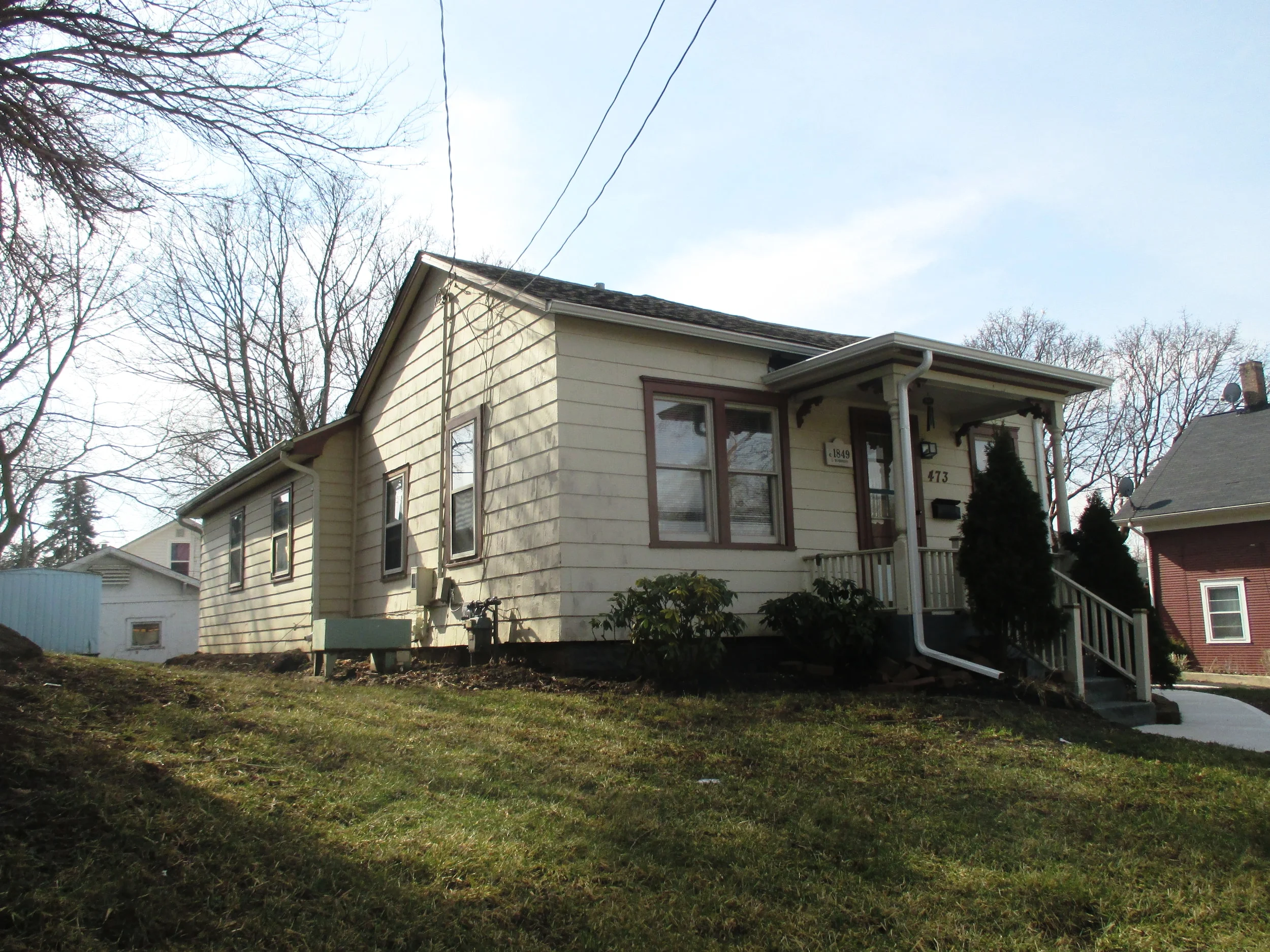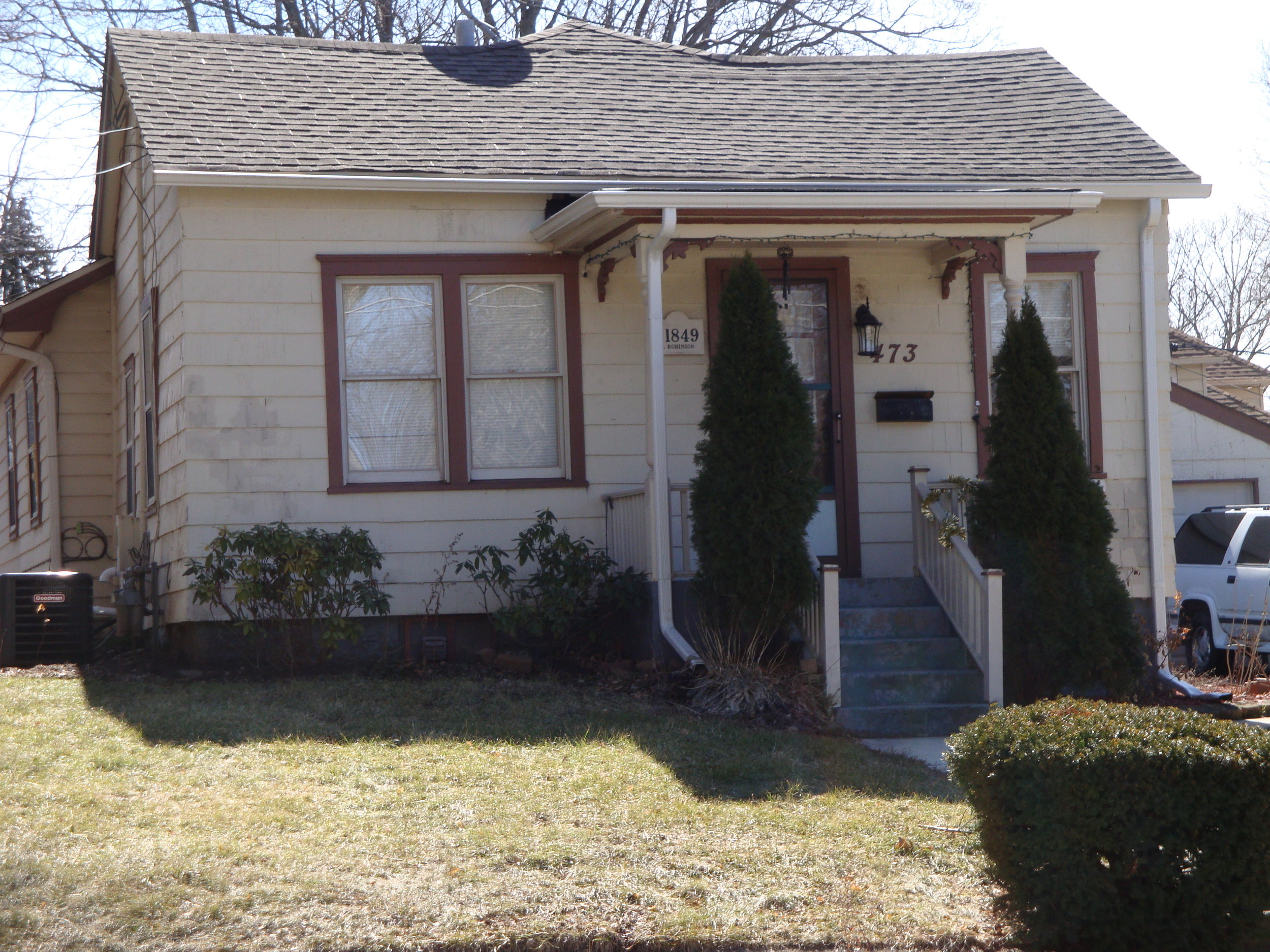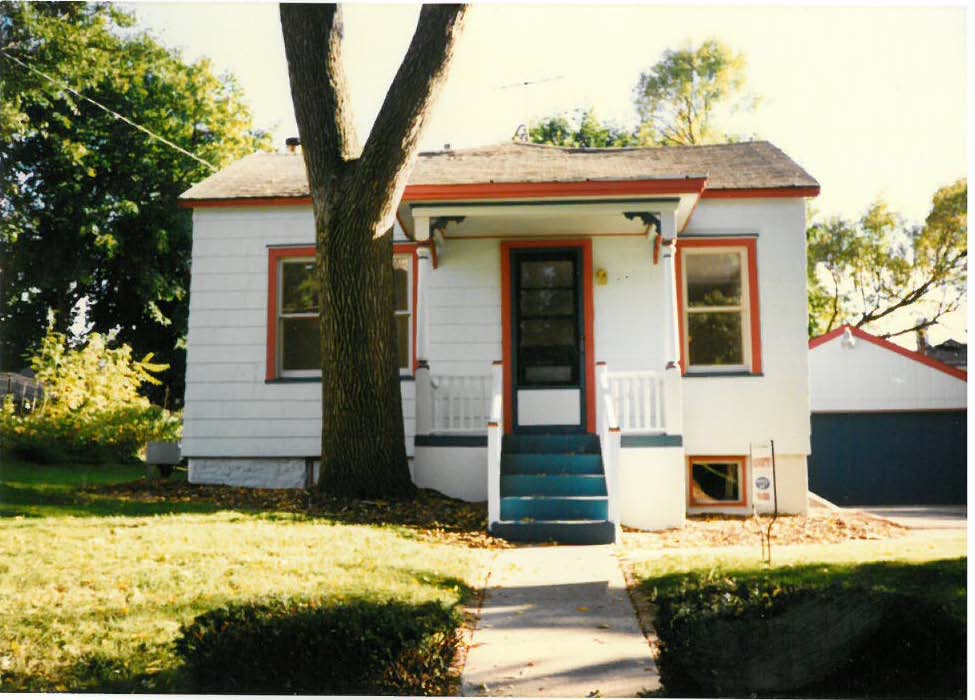473 PARK STREET
HISTORIC SIGNIFICANCE
Following James Gifford's establishment of the town of Elgin in 1835, the area continued to grow and attract people who settled on the bluffs above the Fox River. Laura Robinson saw the value in living away from town, but not too far away and in a wooded area along an established road; hence, in 1847, she bought the property on Park Street in Benjamin W. Raymond's addition for $30. Two years later, Robinson warranted her property to Watson Taylor for $300. This was a huge increase and large enough to suggest the development of the property. He owned the property for a short time until he lost it due to foreclosure to a Mr. Padelford. Padelford sold the property to James Cassidy, who is a partner in a tailor business with Bernard Lynn, in 1857 for $600.
James, and his wife, Sarah, had three children including Joseph, Sarah and Emaline. The Cassidy family owned the property for just over 50 years until Joseph sold the property to Fred John Martin for $1,100.
ARCHITECTURAL SIGNIFICANCE
473 Park Street suggests a pre-railroad house in the New England tradition - one story, one room, simple with no detail. This style of house spread westward with the increasing settlement of the United States and it is well established that Elgin was settled by persons from the New England/East coast areas.
The original house at 473 Park Street was rectangular and very small, containing one, possibly two, rooms. At sometime, the house was more than doubled in size including the basement. The basement of the home contains hand hewn load-bearing beams and tree trunk support posts as well as a rough finish on the walls.
The exterior is plain to the point of no detail. The front stoop has decorative brackets at the roof and decorative porch support posts. The spindles on the stoop and steps are newer, being installed sometime in the early 1990s.
TIMELINE OF PREVIOUS OWNERS
Sources: 1996 Heritage Plaque Application; Audio: TextAloud





